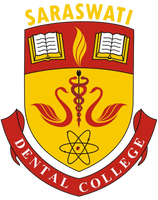
Temporomandibular joint ankylosis, a debilitating disease mainly affecting children, is characterized by progressive restriction of mouth opening and maxilla-mandibular developmental deformities. The major goals towards the treatment of TMJ ankylosis are to establish movement and functioning of the jaws, avoid relapse or setback and achieve normal growth, occlusion and deformity correctin. Untreated TMJ ankylosis in children may result in a significant functional and aesthetic adverse consequences including facial asymmetry. It can progressively worsen due to hypomobility and abnormal muscle functions. The longer the duration of hypomobility, the more severe muscular atrophy and facial asymmetry will be. The short ramus condyle unit also restricts mid-face growth to a varying degree. One of the major complications of TMJ ankylosis is mandibular retrognathia, giving rise to bird face deformity. Craniofacial distraction osteogenesis has been developed as a standard surgical strategy for rectification of craniofacial deformities. It can be defined as a procedure of new bone formation between the surfaces of bone portions or fragments that are gradually differentiated in response to incremental traction. Distraction osteogenesis has also drawn attention in the treatment of extreme mandibular retrognathia. Inherent aberrances are associated with severe mandibular retrognathia or micrognathia including craniofacial syndromes such as hemifacial microsomia, Teacher-Collins syndrome, Pierre-Robin syndrome, and Nager syndrome. Mandibular lengthening acquired by gradual distraction results in expansion of mandibular bony tissues as well as additionally relative coordination, congruence modification of muscles and the surrounding soft tissues. The forces produced and transformed by the distractor on the mandible are alike to physiological forces throughout the course of mandibular development.


No Any Replies to “Distraction Osteogenesis In TMJ Ankylosis”
Leave a Reply